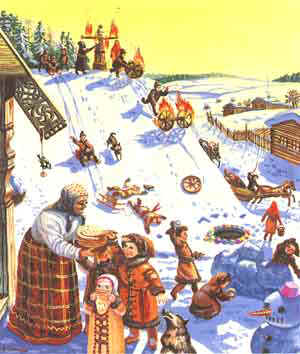Maslenitsa and the Carnival

Recently finished celebrating the great feast, known worldwide under the Russian name – Maslynitsa (In Europe known as Carnival). While indeed it is a holiday not only Russian but also Ukrainian. Because it was born in ancient times, there was no trace of any of Russia and Ukraine, and the great power of the Middle Ages country – Kievan Rus only get out of diapers. This holiday pagan, with the advent of Christianity in Russia is harmoniously integrated with the new religion.
Our ancestors who lived in the early Medieval time were much closer to the earth and nature, and very finely felt their rhythm, mood, and heart rate. That changes with such sentiments mother earth and nature, due to the emergence of the ancient pagan holidays. The celebration of Carnival lasted for weeks, and symbolized the arrival of spring, the sun and heat. During the celebration people baked pancakes, rolled burning wheels and burning lights, all this according to the beliefs of ancient Slavs was soon to call the sun. A loving men and woman who rode through the villages on a decorated sleigh and warmly kissed, their ardent love was meant to fill with life force all of nature. For the same purpose there were any other holidays of the action, fun games, coasting on a sled, even fistfights. On the last day of Maslenitsa there were farewells to winter, which in a large straw dolls solemnly, burned at the fire.
With the advent of Christianity, the celebration of Carnival festivities were the last major before the beginning of Lent. Interestingly, the celebration of Maslenitsa is similar to the Slavic and elsewhere. The most famous of these is Carnival, which is annually celebrated in Italy. (The most colorful Carnival celebrations held in the glorious city of Venice). Carnival is also before the beginning of Lent, that is, at the same time as the Maslenitsa.
In Ukraine, the Russian Maslenitsa has its own name – Pushenya, the tradition of celebrating the festival to this day preserved by Hutsuls. Unlike the Russians, who during the Carnival eat mostly crepes in large quantities in the Ukraine, but they also eat dumplings with cottage cheese and sour cream.